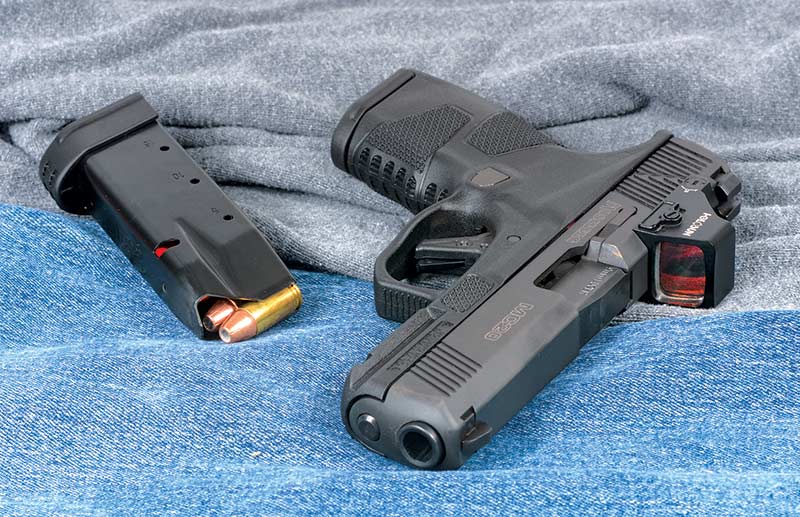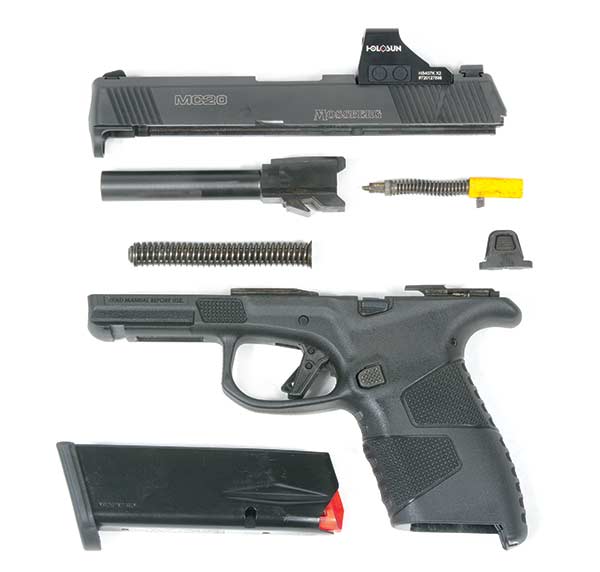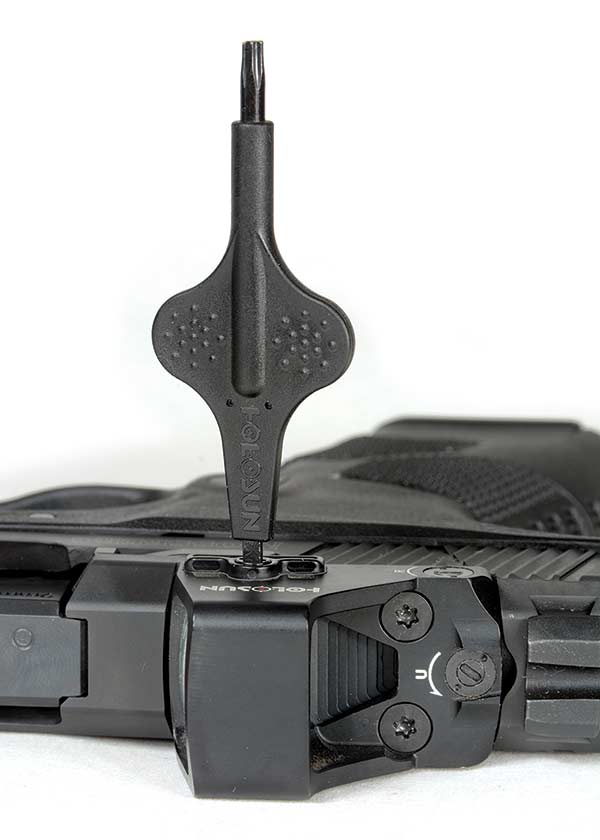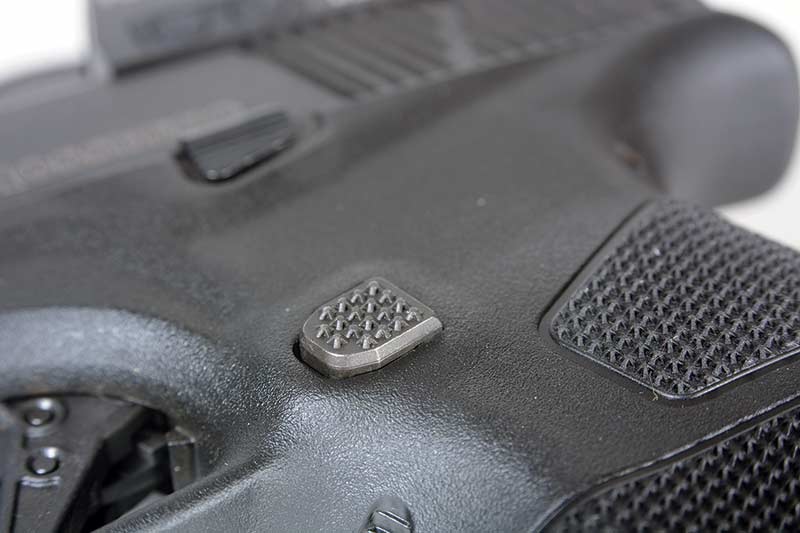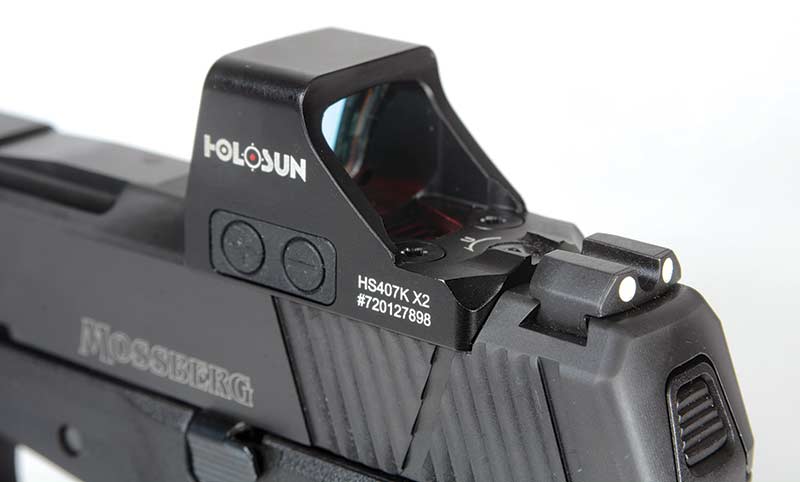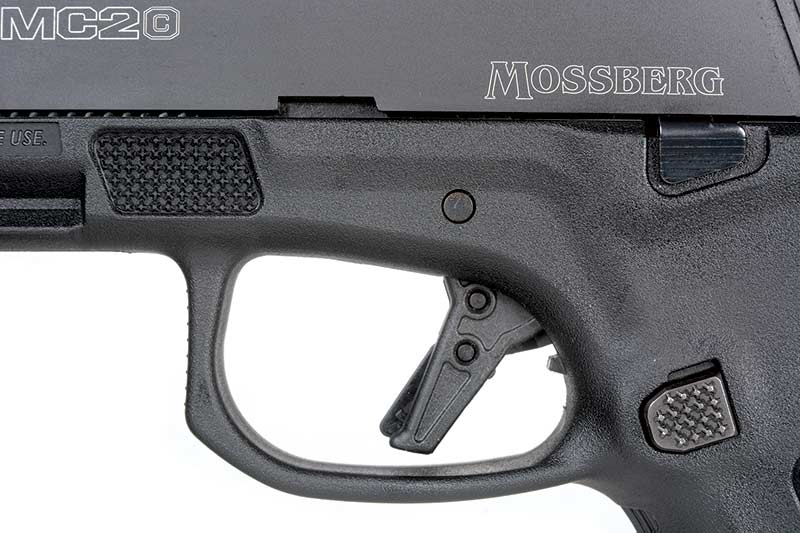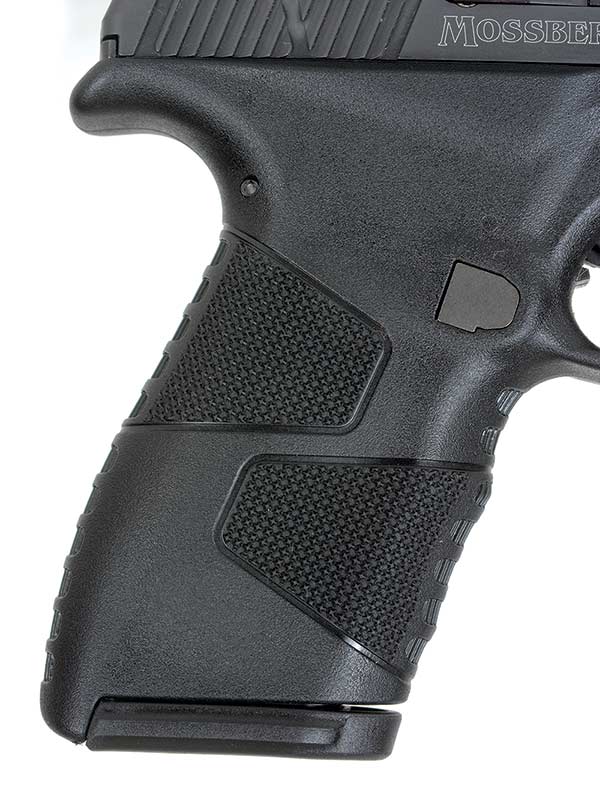Concealed Carry Contender
Mossberg MC2c 9mm
If you think of O.F. Mossberg as only a shotgun company, you haven’t been paying attention. Yes, the Model 500 pump gun is the most-produced shotgun of all time, having passed 11 million units a couple of years ago, but Oscar Frederick Mossberg got his start working on pistols alongside scatterguns. After immigrating from Sweden in the late 1800s, he worked for Iver Johnson, designing part of the latch mechanism for its trademark breaktop revolvers. Next, Oscar went to C.S. Shattuck Arms, which made shotguns and a unique pocket pistol, and on to J. Stevens. At Stevens, Mossberg designed a four-shot repeating pistol that clearly does homage to the Shattuck gun, a version of which he and his sons manufactured in the barn behind his house.
After a brief stint with Marlin, O.F. Mossberg & Sons was formally born in 1919, producing yet another version of the four-shot pistol called the “Brownie,” of which some 37,000 were made in a dozen years. So, while the handgun side has lain dormant for many years, it’s not a complete shock that Mossberg has returned to the pistol market.
Back To Pistols
And have they. I spent some time with the MC2c at Gunsite last fall and was favorably impressed enough to request a test gun. Following the now-familiar pattern of an optic-ready, striker-fired polymer pistol in 9mm, the MC2c comes with two magazines, a flush-fit 14-rounder and a slightly extended 15-shot version. Attractively priced at an easy-to-remember $556 without optics, I found it online for $419. The test gun came with a Holosun HS407K X2 red dot in place and with fixed white dot sights, dovetail mounted at each end (Truglo tritium sights are an extra-cost option). The rear has a U-notch instead of the customary square, and the sights co-witness through the optic well enough that I was able to pick which one I wanted to shoot with.
The angled cuts between the slide flats and top have been softened without eliminating the angular appearance, and all other sharp edges on the gun have similarly been removed, with the sole exception of the right rear corner of the breechface, which the heel of my support hand occasionally find while manipulating the slide. The fore-and-aft one-way cocking serrations are angled so you get a more positive grip pulling from the front, like most old Colt autopistols, and the end of the extractor is shaped into a tab to serve as a loaded chamber indicator.
Maintenance
The rear of the slide has a takedown button licensed from Strike Industries, and this is where things get interesting.
Having to dry-fire a pistol to field strip it isn’t necessarily a recipe for disaster, but enough people have had negligent discharges doing it to justify looking for a better way. It’s worth remembering S&W specifically designed the pivoting ejector takedown of the M&P to address this.
To field strip the MC2c, lock the slide to the rear, push inwards on the serrated tab in the rear plate and slide the plate downward and out. It doesn’t require much hand strength to do, and nothing shoots out at you, though the striker assembly will poke out a bit. Pull on the tab at the bottom of the striker and remove the self-contained striker assembly from the back of the slide. Lower the slide slowly — if you just hit the slide lock lever, you’ll launch it — and run the slide assembly forward off the frame. The captured recoil spring and barrel come out as per usual. It’s clever and simple, with little to lose and a greatly reduced risk of unintentional discharge.
More Details
The trigger is straight, with a slight angular hook at the bottom of the trigger shoe, and advertised to break at 5.5 lbs., exactly where the test gun measured on my Lyman digital trigger scale. The steel mag catch is reversible and the MC2c is available with an optional cross-bolt safety located directly above it, which mine came without. While safeties on striker-fired pistols remain a bit controversial, there are good reasons for them, and Mossberg lets you make that decision for yourself.
The polymer frame is mostly smooth, with a recessed slidestop and a pair of textured contact patches that wrap around the grip from the rear and the front. A second pair sits above the front of the triggerguard. The front strap has a mild swell that fits between the middle and ring fingers, and an even subtler one below that, as well as recessed serrated ovals on the front and back straps. Finger grooves are tricky: They can be comfortable and help lock the gun in place, but only if they fit you — and most don’t, unless the grooves are specifically shaped for your hand, as pistolsmith Austin Behlert used to do. The shape of the MC2c’s grip, however, fits my hand comfortably and securely without the feeling of locking my fingers into places they do not naturally want to be.
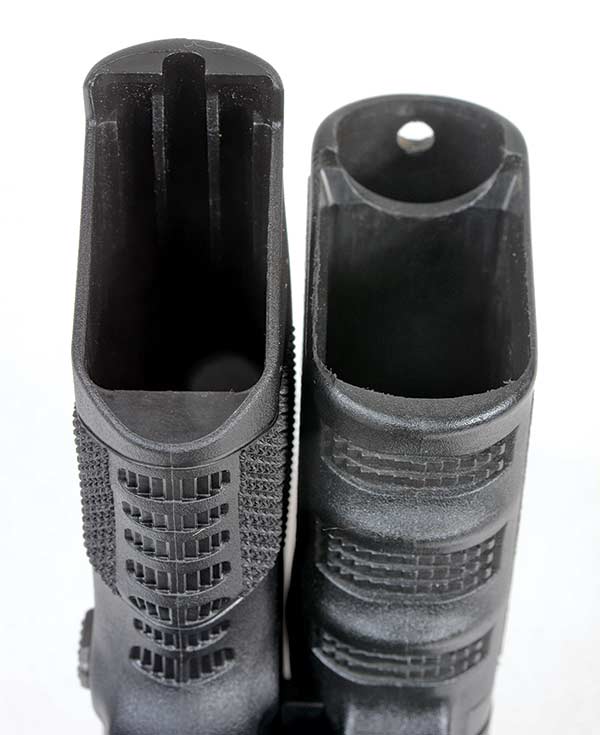
The MC2c (left) is targeted directly at the concealed carry market
currently dominated by the GLOCK 19 (right). The oval cross-section
of the Mossberg grip, as well as being substantially slimmer, gives it a profile
that is easier to break
up under a cover
garment while
giving up only
a single round
of capacity.
Austrian In The Room
It’s impossible to have this conversation without talking about the Austrian in the room. One of my older articles re-ran a couple of months ago, and I was a bit chagrined to find my statement that the 1911 was the carry gun by which all others were judged. Twenty years ago, when I wrote it, sure, but that honor has long since gone to the GLOCK 19, in whose space the MC2c is clearly designed to compete.
One way in which the Mossberg pistol is intended to better the 19 is the width of its grip since we all know the butt of a gun is the hard part to hide. The accompanying photos show the two side-by-side but still don’t quite catch the difference in thickness or the more oval cross-section of the Mossberg’s grip, which breaks up the gun’s outline better under a cover garment. Measured at the widest point across the palm swell, the MC2c mikes about 0.050″ thinner than my 3rd Gen GLOCK 19, but it’s about 0.20″ narrower near the top of the grip and around 0.215″ at the bottom. That’s a lot, especially when the difference in overall payload is one cartridge apart. As expected with a narrower grip, the magazines are around 0.090″ thinner, and overall weight unloaded is around 2 oz. less.
Range Performance
people neglect pistols, I usually test them without cleaning or oiling, which is what I did here. The MC2c came out of the box and absorbed over 500 rounds of ball, most from Black Hills, with a couple of boxes of other brands thrown in. It never hiccuped or bobbled in any way; it just nonchalantly stitched its way through the test ammo. The trigger has a good, strong reset, but the angled tip tended to dig into my finger during longer range sessions, so if left unsupervised for long enough, I might smooth that a bit.
Accuracy was well within range for the intended use. I had no problem making repeated hits on a 14″ steel plate at 80 yards, standing unsupported. Similarly, I could make the bullet holes touch at 7 yards. I struggled at 25 yards, however, and while I shot a best group of 2″ standing unsupported, most of my groups were closer to five even from a rest.
This completely puzzled me until I paid closer attention to the optic. The Holosun 407-series optic performed as expected during the test but has a 6 MOA dot that made it hard for me to hit the orange circles I use for accuracy testing at that distance. The bright red dot was bold and quick — doing single-round sight acquisition drills at 7 yards, I could pick it up fast and put the rounds close, sometimes even touching. However, my best guess is the ratio in perceived size between the aiming dot and the target spot made it hard for my eye to do the precise alignment required to truly group well. Closer was fine, and much farther was fine.
I’ve been working with a 2 MOA Holosun 507, first on an FCW/Marvel .22 pistol and currently on a Powder River Rubicon rimfire rifle. That 2 MOA dot is far easier for me to shoot well from 7 yards out to 100. If I were purchasing this pistol, I’d be very tempted to swap the 407 for something with a smaller dot. Your mileage may vary.
The best concealed carry pistols tend to have a barrel in the 4″ range and a reasonably sized butt that gives adequate room for your hand without excess bulk to hide. The Mossberg MC2c does all that, hits and runs reliably, and does it for a reasonable price. It’s also a flatter package that’s even easier to conceal than some of its most popular competition. In the crowded field of CCW handguns, it’s a contender.
For more info: Mossberg.com, Holosun.com, Black-Hills.com, Latama.net


